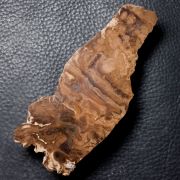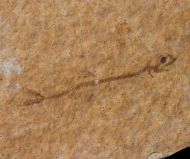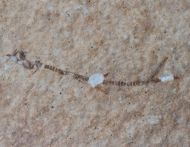Fossils for sale
Welcome back!
Fossiles of the Green River Formation
Map: | About Green River Fm. fossils : |
(after Ferber & Wells 1994) | Fossil Lake in Wyoming is one of the most famous locations from the Eocene (about 40 ma). Spectacular finds such as bats, turtles and even fossil birds were made here. However, the fossil fish are one of the most attractive finds at this site. At this point, the Green River Formation is in no way inferior to other famous paleontological sites, such as Messel or Solnhofen. The Green River Formation is a versatile fossil eco system. The fish fossils can be classified into two categories: the "18 Inch Member Fossils", which are characterized by a dark and high-contrast preservation after a rather complex preparation, and the "Split Layer Fossils", which are usually somewhat lighter colors are preserved but they can be very detailed as well. The Green River Formation is also occurs in Utah and Colorado. Especially in Utah and Colorado, the Green River Formation has on some sites an significantly higher calcium carbonate content. This is extremely beneficial for the preservation of fossil insects and petrified leaves. The sediments of the Green River Formation are extremely diverse in terms of lithology and fossil content. Overall, the Green River Formation covers more than 65,000 square kilometers and is approximately 600 meters thick on average. |



